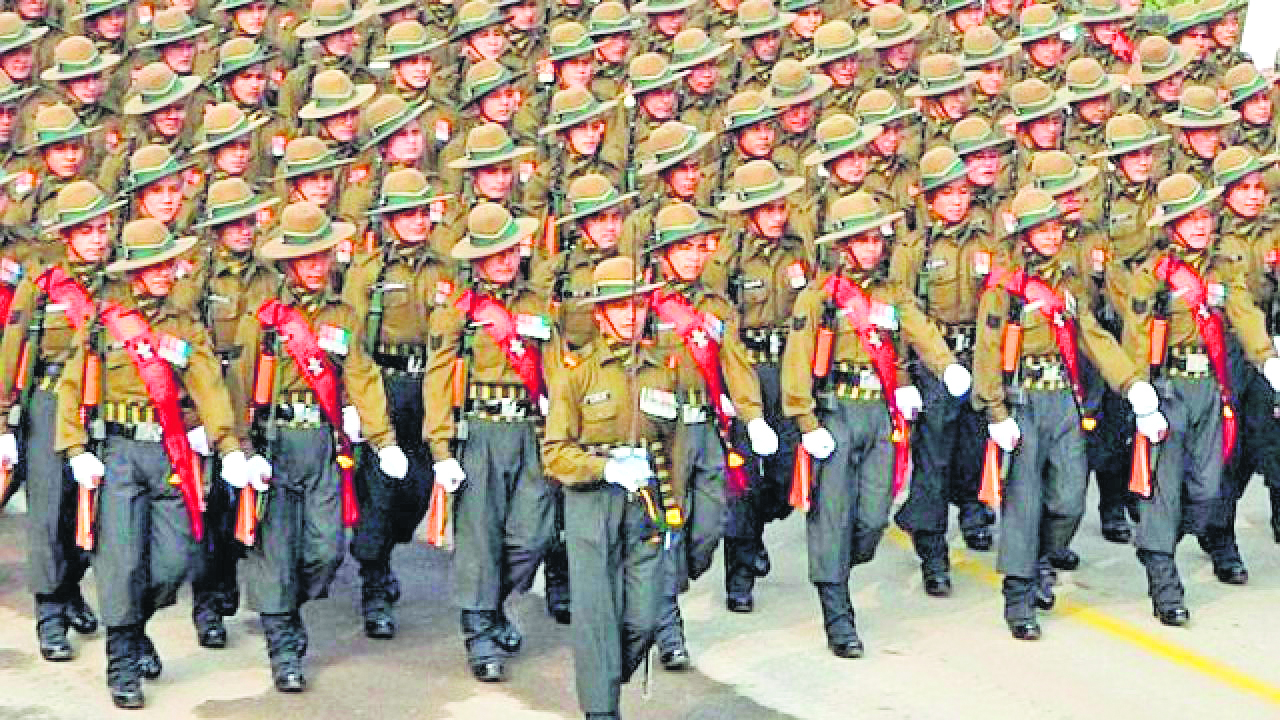An imminent shrinking of the Gorkha Brigade will bring it down to six to ten battalions from around 40.
The Indian Army’s Gorkha Brigade has been in the service of the Indian Army from British times up to Independence and continuing so in the Indian Republic to date. Consisting of both Indian-domiciled and Nepal-domiciled specific Nepali-speaking Hindu and Buddhist communities, it has become well-known for its effectiveness in both war and counter-secessionist military operations. With the Government of Nepal having decided not to allow recruitment of its citizens into the Indian Army from 2022, consequent to the introduction of the new Agniveer manning system of the Army, the Gorkha Brigade is now due for serious reduction in size, since about 70% of the Gorkha Brigade are Nepali citizens.
With the Gorkha Brigade soon to be composed of only Indian-domiciled Gorkhas, the number of battalions, the self-administering fighting units, may be reduced from about 40 to perhaps six to ten. This is not a bad thing, as decisions regarding the nature of providing fighting men for their armies is a prerogative of the individual sovereign country. This prerogative is equally true for a decision regarding whether a State’s citizens should enroll in another country’s army or not.
In view of the imminent shrinking of the Gorkha Brigade down to a probable six to ten battalions, it would be prudent to merge the existing four Gorkha Training Centres, which train recruits and turn them into soldiers, and retain only one. Of the four, that of the 11th Gorkha Rifles, the newest and youngest regiment, in Lucknow Cantonment, has adequate training area on its campus, modern amenities and training facilities, and has repeatedly been adjudged the best infantry recruit training centre in the Indian Army. It is also the newest such training centre among the four existing ones, has been well-designed and its buildings and facilities are organized for a regular recruit intake of a little over 800 recruits at any time. It would serve the new reduced-size Gorkha Brigade well. This merger into one suggested new one-location one would be most suitable. The other three centres, in Subathu in Himachal Pradesh (of the 1st and 4th Gorkha Rifles regiments), the one at Varanasi (of the 3rd and 9th Gorkhas), and that at Shillong, Meghalaya, (of the 5th and 8th regiments), can be re-allotted for other military purposes. Making these necessary changes early makes for better planning and preparation, and is thus more efficient in the actual administrative merger, which is not an easy task in practice.
Separate from the foregoing, it may also be wise to re-number the remaining battalions by seniority of creation (or “raising” in Army language). The present titling and numbering system, based on individual Gorkha Rifles regiments, has existing anomalies from British times which can now be corrected. All such seniority and titular anomalies can be smoothened out simultaneously with the merger and amalgamation of all the separate Gorkha Training Centres in Lucknow Cantonment. For example, the 9th Gorkha Rifles is actually the senior-most among the regiments of the Gorkha Brigade by virtue of its original battalion, the First, having been a regular infantry unit of the Bengal Army of the East India Company before the others. [The Bengal Army was one of the three Provincial Armies of the East India Company from which the Indian Army was created in 1903] The other Gorkha battalions were at the time still irregular units.
A look at the existing Gorkha regiments that comprise the Gorkha Brigade and the dates of the raising of their first battalions as irregulars, and their later conversion into regular infantry units, will suffice to illustrate these anomalies. The 1st Gorkha Rifles, previously irregulars, were converted to the regular 66th Bengal Infantry in 1850. The 3rd Gorkha Rifles, founded in 1815 as the irregular “Kumaon Battalion” with its base at Almora, were used for policing the Nepal border, becoming regular infantry in 1850. The 4th Gorkha Rifles started life as the irregular “Extra Gurkha Regiment”, being raised in Pithoragarh with the object of holding the Kumaon hills, and became regular in 1850 as the 66th Bengal Native Infantry. They later were re-numbered as the 19th Bengal Infantry in 1858. The 5th Gorkha Rifles were raised in 1858 by transferring hill-men from the existing irregular Frontier regiments. The 8th Gorkha Rifles were founded as part of a civil force which developed into a frontier protection force for British India’s north-eastern region. Its First Battalion was founded in Gauhati in 1824, while its Second Battalion was raised in Sylhet in 1835. These two battalions were brought into the Bengal Army in 1861 as the 43rd and 44th Native Infantry. They remained so named until the re-organisation of 1903. The 9th Gorkha Rifles have been already mentioned, their First Battalion having been raised as the Mainpuri Levy which became the 63rd Bengal Native Infantry in 1824. The junior-most regiment, the 11th Gorkha Rifles, originally raised in Mesopotamia (now Iraq) during the First World War and de-mobilised after the Third Afghan War, was re-raised after Independence in January 1948.
After the First World War, administrative reforms were carried out based on a study of the effectiveness of the previous system of organization of the Indian Army. The recommendations of the study were that infantry regiments should ideally have six battalions each for optimal efficiency. The new Gorkha Brigade as a single regiment will thus conform closely to this recommendation.
It is time this combined administrative exercise, of the merger of recruit training centres and the rationalization of the Gorkha Brigade as a socio-administrative entity, is carried out. This would enable the necessary physical movement of movable regimental non-Government assets belonging to the individual regiments and their training centres to be done smoothly.
The author was in the Indian Army from 1968 to 1991, and was a member of the Gorkha Brigade.

